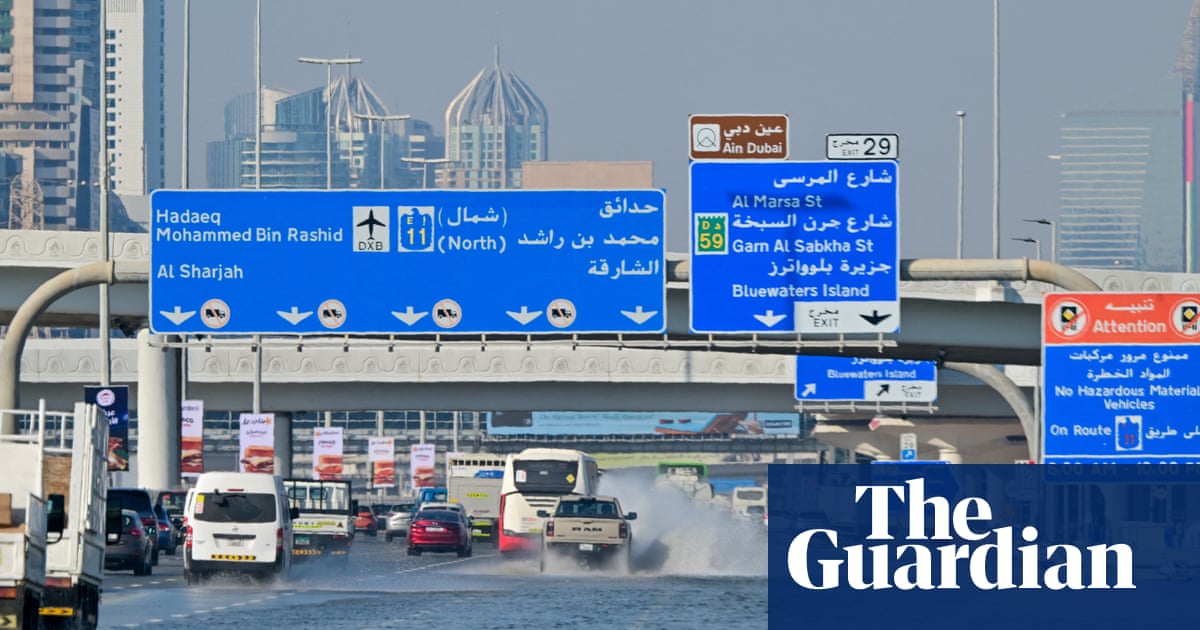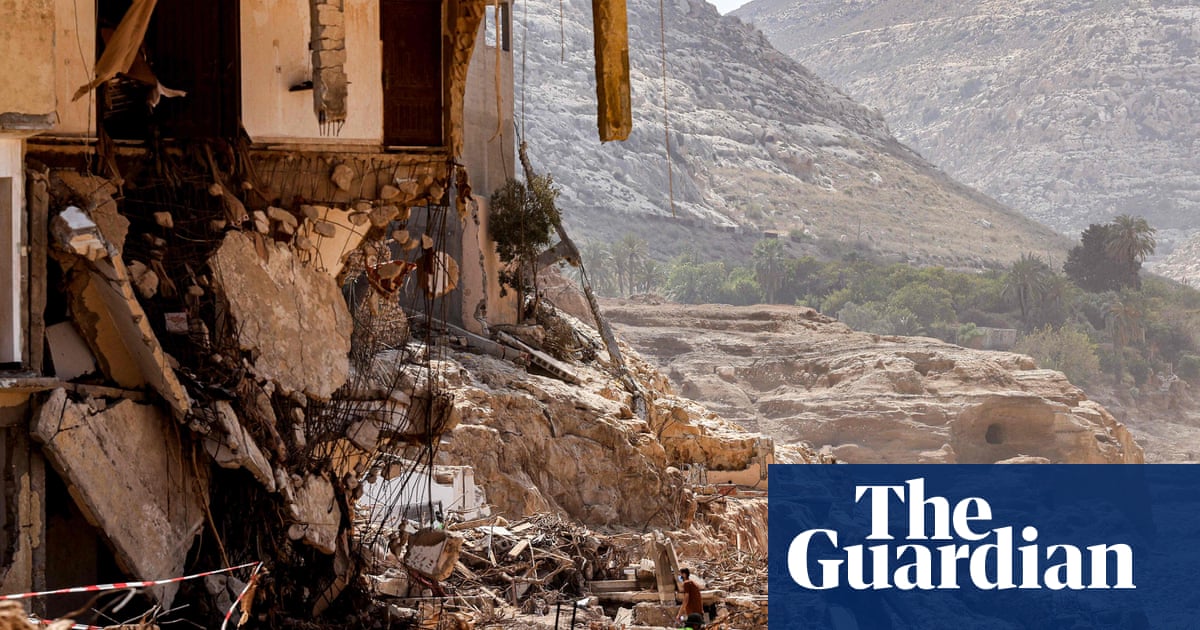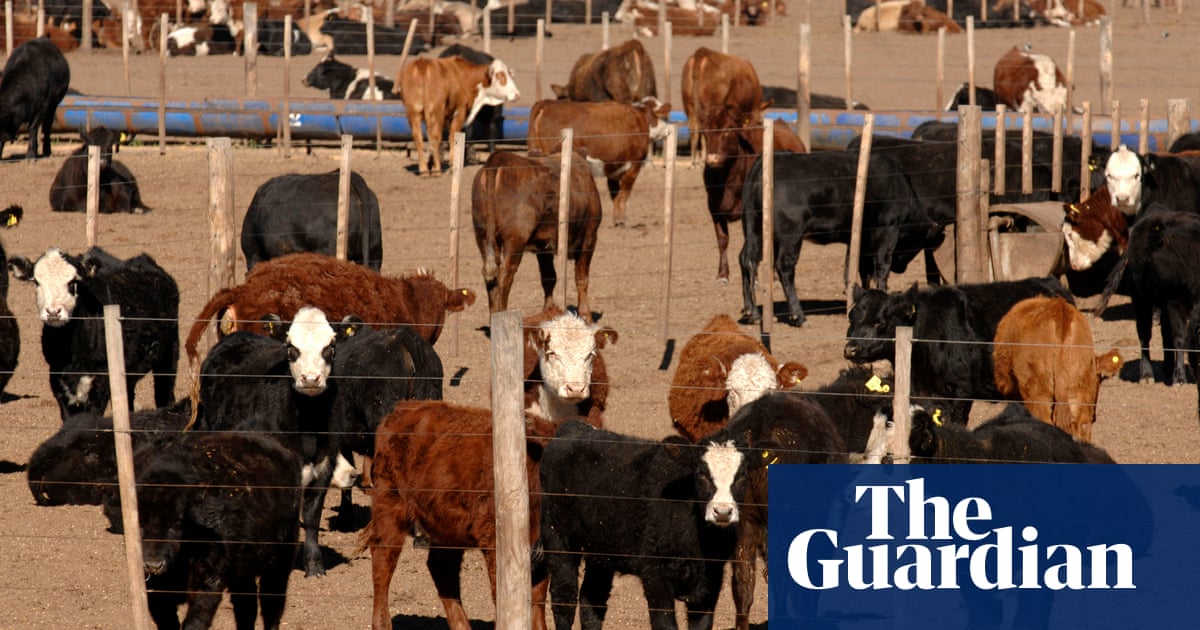
Fossil fuels and concrete combined to worsen the “death trap” conditions during recent record flooding in the United Arab Emirates and Oman, a study has found.
Scientists from the World Weather Attribution team said downpours in El Niño years such as this one had become 10-40% heavier in the region as a result of human-cased climate disruption, while a lack of natural drainage quickly turned roads into rivers.
At least 23 people died in flood waters, including 10 children in a school bus that was swept away, after regions of the Arabian peninsula were deluged by extreme rainfall on 16-17 April.
Dubai received more than 14cm of rain in the space of 24 hours, equivalent to a year and a half of average precipitation. This was the heaviest downpour since records began in 1949.
Across the UAE and Oman, the flooding caused huge damage to buildings and cars, power failures and school closures. More than 1,000 flights were cancelled, causing several days of delays, after the runway was flooded at Dubai airport, the world’s busiest international airport.
In the immediate aftermath of the downpour, there was speculation that artificial weather modification might have been the cause, because the UAE is known to use cloud-seeding technology to alleviate water shortages. However, the new study concluded that “cloud seeding had no significant influence in the event”. The UAE’s National Center of Meteorology has also denied that it engaged in any such operation on the day of the downpour.
However, human influence worsened the impact in other ways. Although a dearth of historical rainfall statistics meant the researchers could not precisely determine how much of the increase was due to human-caused climate change, they found that global heating, caused by burning fossil fuels, was the most likely explanation for the record downpour.
This region of the Persian Gulf is one of the driest places on Earth, but it is historically prone to intense rain and flash flooding every few years, particularly during El Niño phases. Most scientists believe climate disruption is making El Niño events more intense, by a factor of 10-40%, in this region.
The study notes that a warmer atmosphere can hold more moisture. At the current 1.2C level of global heating above preindustrial levels, the atmosphere can hold about 8.4% more moisture. Changing circulation patterns in a warmer, more disrupted climate can bring fiercer rain to some regions.
Human alterations of the landscape have also added to the risks faced by people in low-lying areas. Eight out of 10 people in Oman and the UAE live in flood-prone neighbourhoods and many drivers commute through high-risk areas. Despite advance warnings by meteorological agencies, many people were trapped.
Nasa has released satellite images that reveal the extent of the flooding in the normally dry desert region. The image shows heavy inundation in industrial areas of Jebel Ali, just south of Dubai port, and near the green resorts and parks south of Palm Jebel Ali, a town 20 miles south-west of the city, which hosted the Cop28 climate summit last year. Parts of Abu Dhabi, the UAE’s capital, were also underwater until 19 April.
“We have to stop burning fossil fuels and we have to redesign our cities,” said Friederike Otto, a senior lecturer in climate science at Imperial College London. “We must stop putting concrete everywhere. The reason for the fatalities is that there are almost no permeable surfaces at all, so the road turned into a river in a very short time. This builds a death trap.”












